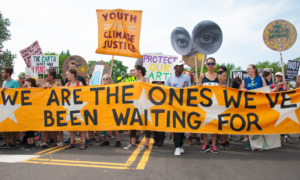Author(s): Urban Institute
Published: January 11, 2022
Report Intro/Brief:
“The practical recommendations laid out in this guide are intended to support approaches specifically focused on reducing the number of lives lost to gun violence and keeping young people at greatest risk of becoming perpetrators or victims of gun violence alive and free from incarceration and other forms of punishment and control.
We acknowledge in the recommendations the deep mistrust of the justice system among marginalized youth and communities who have disproportionately borne the costs of incarceration and other consequences of traditional justice system responses to violence. Yet the best approaches to addressing youth gun violence using all available tools may be those in which law enforcement stakeholders, local government stakeholders, and community members collaboratively coproduce safety for those most affected and emphasize community engagement and voices. Many of our recommendations therefore identify the proactive, helpful role that law enforcement can play in antiviolence work of all kinds.
We summarize our recommendations in this executive summary and describe them in detail in chapters 2 and 3. We organize them into two sections with five and four practice areas, respectively. The recommendations in the first section (chapter 2) concern how to build antiviolence infrastructure to ensure everything is in place for jurisdictionwide, multicomponent, adaptable, and sustainable strategies to reduce gun violence committed by and victimizing young people. Those in the second section (chapter 3) concern how to build effective programs and interventions that operate within and benefit from that infrastructure.
By section, the practice areas are as follows.
To build antiviolence infrastructure:
(1) formalize government’s role in coordinating antiviolence work,
(2) resource and support a robust community-based antiviolence strategy,
(3) engage the community to establish and maintain peace,
(4) calibrate the relationship between law enforcement and community violence interventions, and
(5) collect and share data to refine practices and assess effectiveness.
To build effective programs and interventions:
(6) assess the problem to focus attention and resources,
(7) build positive relationships with and support young people at high risk of gun and gang/group violence,
(8) interrupt and mediate conflicts, and
(9) use suppression and enforcement precisely and sparingly.”
>>> CLICK HERE to see all of Youth Today’s REPORT LIBRARY
































